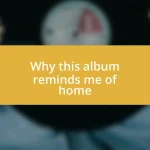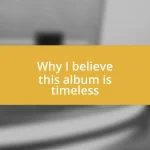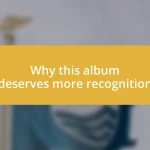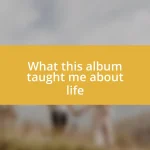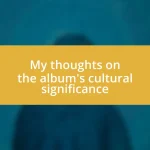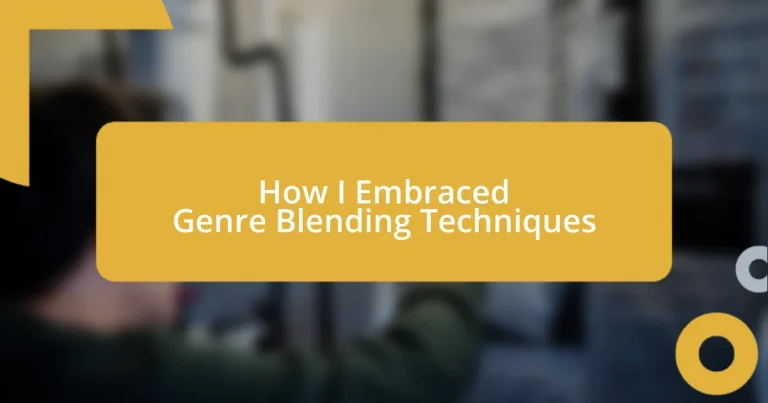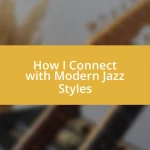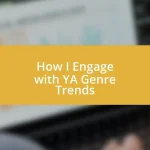Key takeaways:
- Genre blending enhances emotional depth and character development by combining elements from different genres, allowing for richer storytelling experiences.
- Identifying genres to blend involves personal reflection and experimentation, focusing on key themes and character interactions that create unique narrative dynamics.
- Successful genre blending examples like “The Night Circus” and “Get Out” demonstrate the potential for deeper meaning and societal commentary within creative narratives.
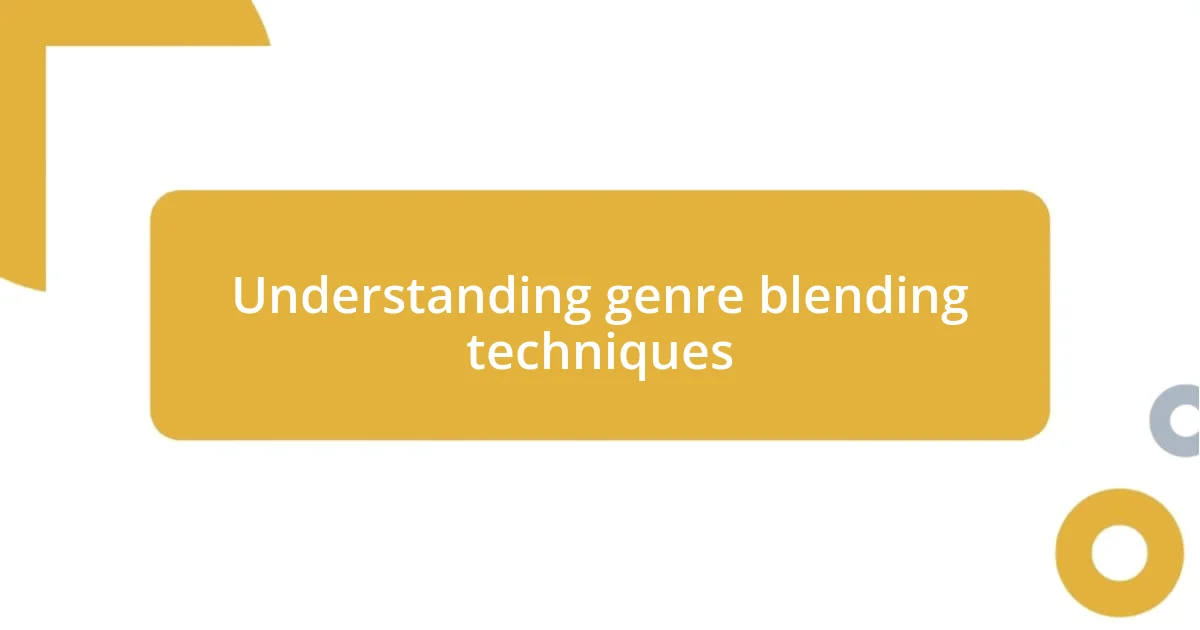
Understanding genre blending techniques
Genre blending techniques offer an exciting playground for creative exploration. I still remember the first time I stumbled upon a book blending fantasy and historical fiction; it felt like my imagination was unleashed. Have you ever picked up a story that seamlessly transitioned between genres, making you feel both captivated and perplexed? That’s the magic of blending.
At its core, genre blending is about breaking down boundaries and redefining narratives. For instance, incorporating elements of sci-fi into romance can create a unique backdrop that elevates the emotional stakes. I often find myself asking how different genres can enhance a single theme—like love or adventure. It’s fascinating to see how combining these elements can evoke unexpected feelings or insights from the audience.
When I experimented with mixing genres in my writing, I discovered that it encouraged deeper character development. I still recall crafting a detective story with touches of magical realism; it forced my protagonist to grapple with both logical clues and surreal challenges. This duality not only enriched the plot but also resonated with readers on a more profound emotional level. Isn’t it intriguing to think about how blending genres can mirror the complexities of real-life experiences?
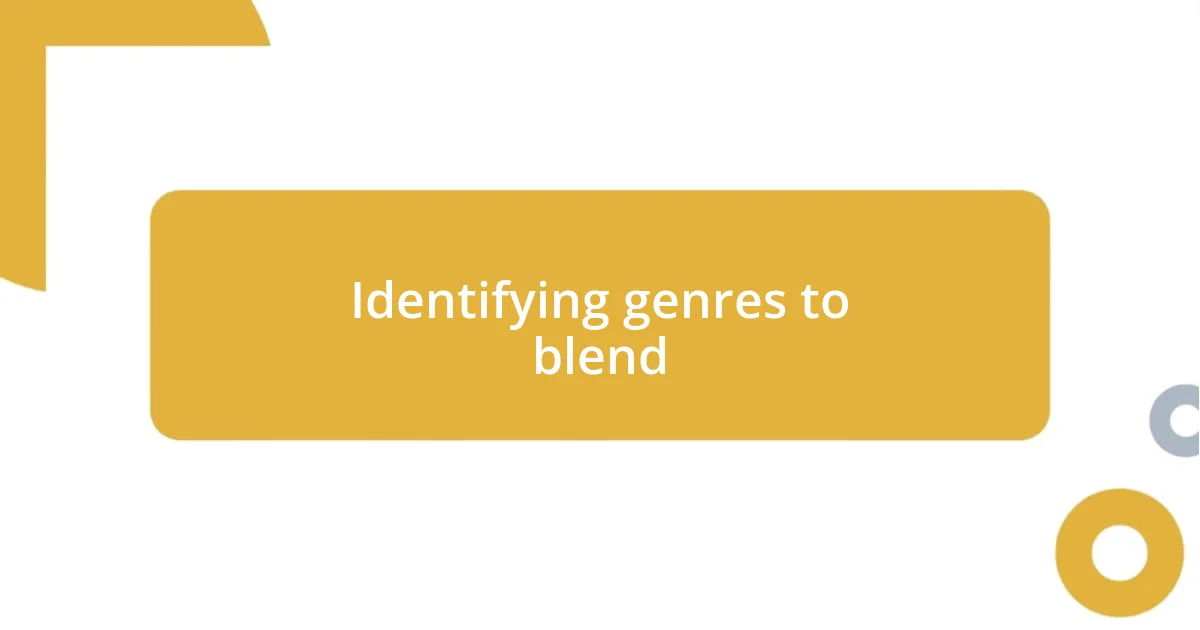
Identifying genres to blend
Identifying genres to blend involves a mindful exploration of the elements that resonate with you personally. I remember when I first thought about blending horror with humor; it was a revelation. Imagine the contrast of a chilling moment paired with a punchline—it creates a unique dynamic that keeps readers on their toes. It’s all about selecting genres that, when woven together, enhance the emotional journey while creating an experience richer than either could offer alone.
In my journey, I often find that reflecting on my favorite stories can provide clues to effective blends. For instance, take action and fantasy—two genres I adore. The thrill of a high-stakes adventure, filled with fantastical creatures and epic quests, keeps readers engaged. By delving into elements from both genres, I’ve felt the exhilaration of building vast worlds while maintaining a heart-pounding pace. Have you noticed how some of your favorite narratives effortlessly pull from multiple genres?
Understanding which genres to blend isn’t just analytical either; it’s often an emotional experience. When I finally fused romance with dystopian themes in one of my projects, it allowed for a deeper exploration of love in desperate circumstances. The emotional weight was palpable, and I could see it resonating with my readers. Blending genres can sometimes reveal thoughts and feelings we didn’t even realize we had, making it a powerful tool in storytelling.
| Genre 1 | Genre 2 |
|---|---|
| Fantasy | Historical Fiction |
| Romance | Sci-Fi |
| Horror | Comedy |
| Dystopian | Romance |
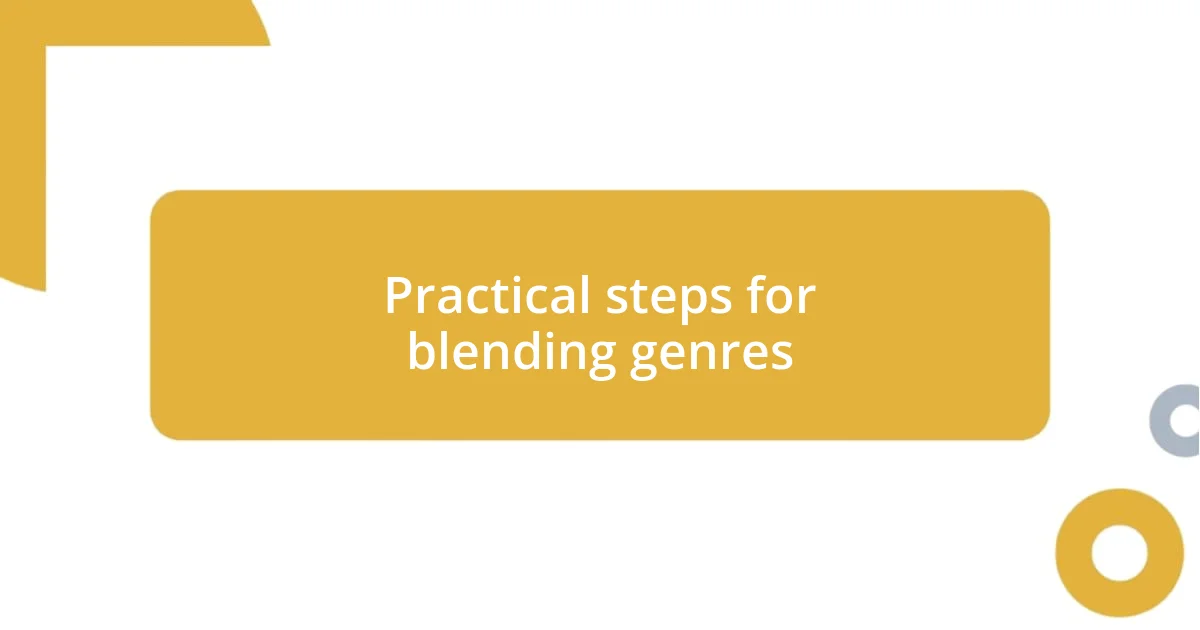
Practical steps for blending genres
When I set out to blend genres, I found that starting with a clear intention helped streamline my creative process. One of the most powerful steps I took was to outline the primary elements of each genre I wanted to combine. For instance, while working on a horror romance, I listed emotional beats typical of romance and juxtaposed them against suspenseful horror tropes. This technique gave me a clearer picture of how to create tension while exploring the nuances of romantic relationships.
Here are some practical steps I recommend if you’re eager to dive into genre blending:
- Identify Key Themes: Think about the central messages you want to convey—what unifies your chosen genres?
- Create a Character Profile: Explore how your character would react in scenarios from both genres. This can uncover unique emotional layers.
- Experiment with Structure: Consider how the story might shift between genres—like switching from a light-hearted scene to a darker one—and how that affects pacing.
- Read Widely: Engage with various genres. I’ve discovered hidden gems that struck me with their innovative blends, providing inspiration and insight.
- Solicit Feedback: Share early drafts with trusted friends or beta readers who appreciate genre blending. Their fresh perspective can illuminate blind spots.
By leaning into these steps, I found that blending genres not only broadens the storytelling canvas but also fosters a deeper connection with my readers.
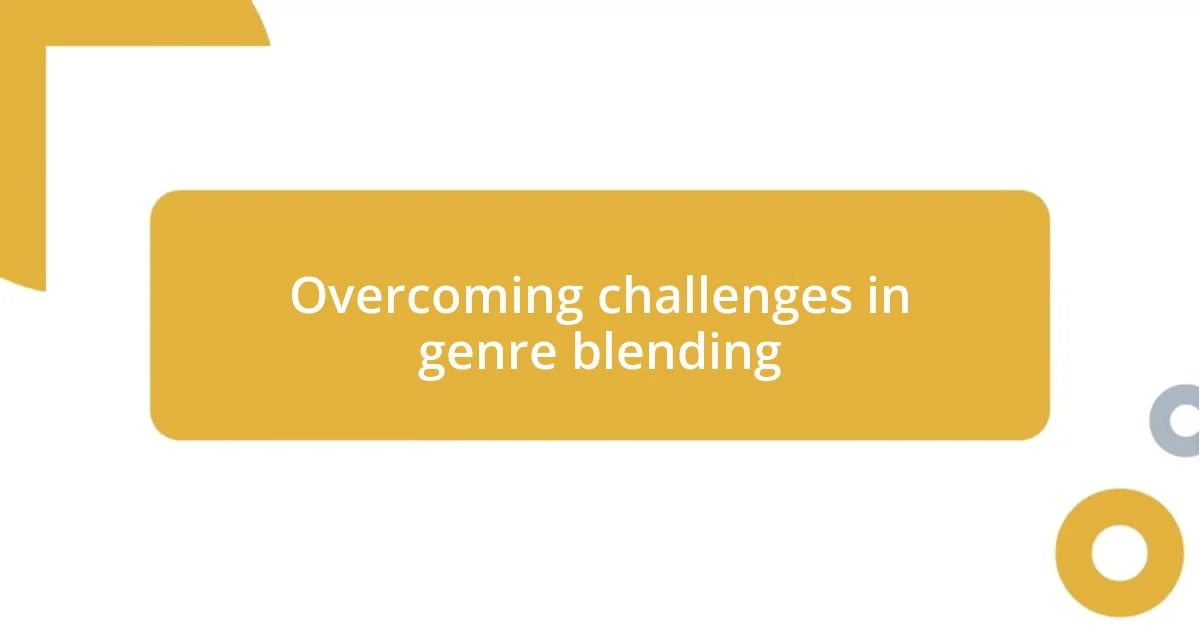
Overcoming challenges in genre blending
Genre blending can be an exhilarating yet daunting process. I recall a project where I attempted to merge science fiction with horror. Initially, the intertwining of advanced technology and raw fear felt like an uphill battle; it was hard to strike the right balance. Do I focus on the eerie unknown of space or on the chilling effects of technology gone wrong? Eventually, I learned that embracing the tension and unexpected turns yielded a narrative that left my readers breathless.
One of the biggest challenges I faced was ensuring coherence in tone. Early on, I penned a piece that shifted erratically between lighthearted moments and intense scares. The feedback was eye-opening; readers felt whiplash instead of engagement. I took a step back and realized that blending genres demands a harmonized narrative voice. It’s a dance—each step needs to flow naturally into the next to keep your audience invested. Have you ever crafted a tale that sidestepped that harmony? You’ll find refining that balance is worth the effort.
Sometimes, the greatest hurdle is our own mind. I’ve often grappled with the fear of not being taken seriously when my blended genres veered into less conventional territory. A piece where I combined magical realism with crime fiction sparked a wave of self-doubt. Would readers dismiss my work as chaotic? But embracing that vulnerability helped me push boundaries, and the gratifying reader responses showed that authenticity resonates deeply. Cultivating the courage to embrace my unique voice ultimately transformed my challenges into stepping stones for creative growth.
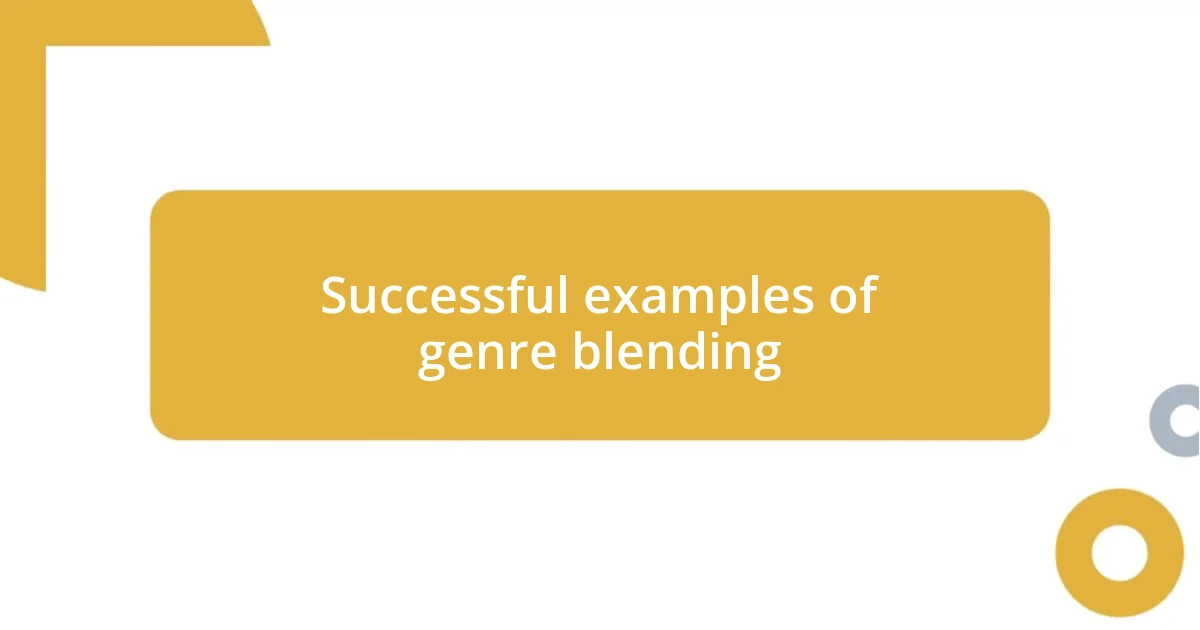
Successful examples of genre blending
There are some remarkable examples of genre blending that have really shaped my understanding of what’s possible in storytelling. One that stands out is the novel “The Night Circus” by Erin Morgenstern, which weaves together magical realism and romance in such a captivating way. The enchanting setting and the tender connections between characters create an atmosphere that’s both whimsical and emotionally resonant. I remember reading it and being completely absorbed, fascinated by how the enchanting elements balanced with human emotion seamlessly. Have any of you found a story that transported you with its unique blend?
Another compelling example is “Get Out,” Jordan Peele’s film that brilliantly blends horror and social commentary. The film uses the horror genre to expose real societal issues regarding race, creating an unsettling experience that goes beyond mere entertainment. Watching it opened my eyes to the ways genre blending can elevate a narrative, giving it a deeper meaning. How often do we consider these layers in the stories we consume?
Then there’s “A Wrinkle in Time,” which interlaces science fiction with elements of fantasy and adventure. The way Madeleine L’Engle constructs a narrative that traverses different dimensions while tackling themes like love and courage is inspiring. I found myself wondering how such a fusion could encourage readers to explore foundational life questions through an imaginative lens. What can our own stories learn from these innovative approaches?

